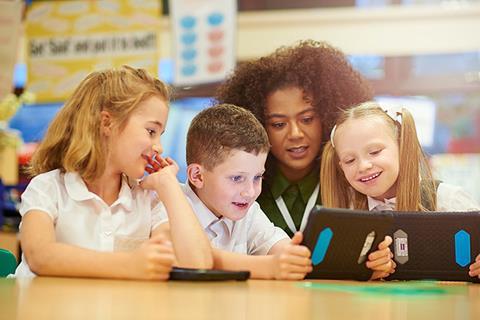An article offering suggestions for teaching English spelling from Pauline Taylor.

Barry Grossmith
Hi Barry,
I began my career teaching Arabic students so I understand your problem. The whole need to put vowels in each syllable can be helped by some phonic work and dividing words into syllables and the dictation and the other methods you are using.
I do find that teaching them some rules does help though. All my students are grateful for the rule about doubling consonants, for example – one syllable, one vowel, one consonant at the end of a word and you double the consonant. When a word has two or more consonants and the last syllable has one vowel and ends in one consonant, then you generally only double the consonant if the stress is on the consonant. There are some exceptions and sometimes both spellings are OK. Dictionary work will help there.
The technique I teach all my students is the one I learnt from Neuro Linguistic Programming. You may know it. Poor spellers are often auditory learners and good spellers always see the word. So you can borrow this technique from good spellers. It has been the most effective and efficient technique I have used so far.
First of all you need to check out whether your students are left or right handed. If they are left handed they may, and only may, need to do this on their right side and not their left side. The way you check them out is to ask them to see something from their past so that they have to remember something visually. e.g. Ask them to look around their house at home and see what is in the rooms. As they do so they will look either up to the left or up to the right to see that remembered information. They will retrieve that information very quickly so the eyes will flick up very quickly. You need to look very carefully and notice that momentary flick. If you don’t catch it just ask the student to look at other things they can remember visually. If the student looks up left to find the information then they will just follow the techniques just as all right handed people do. If the student looks up to the right then ask them to look up to the right instead of the left when they do the following technique.
A learning strategy
- Think of a word you know you can spell easily. Notice the feeling in your body that tells you that you know it is correct.
- Now try to spell a word you are unsure of. Is there a different feeling in your body?
- Now look in a dictionary and find the correct spelling. (All good spellers do this, as they have no bad feelings about admitting they don’t know it.)
- Write the word in quite large, clear letters on a piece of paper.
- Keeping your head looking straight ahead, hold the paper up so that your eyes move up and left. (If you are left-handed you may need to look up right.)
- Hold the paper at a comfortable height and look at the word in small groups.
- Look at the paper as long as you need to, and build up the word slowly in small groups. Keep reading and say it if you like, but you must keep looking at it.
- Check if you can read the letters in the air when you take away the paper. If you can’t, just look at it again. Make it easy on yourself and help yourself and give yourself as much time as you need. Relax and read.
- When you are ready, read the letter without the paper and see the writing in the air.
- Now read the letters only, backwards. You can see the letters in the air so it is easy to do, and this checks that you are reading the word.
- When you are sure that you can read the word give it a sign that will tell you next time you look at it that you have learnt it. Give the word a colour, or make the writing big or bright or flashing. Or you could write it in capitals. You can use the same system for every new word you learn.
- You only need to look up left next time you want to spell this word. You have a dictionary in your head and there is plenty of space in your brain.
- If you want to learn the meaning of the word, put the meaning beside or under the word you are learning, in your own language or in English.
- You can learn phone numbers; information; things you need to study, such as science or maths or history; or phrasal verbs; verbs and prepositions; word order of adjectives and so on.
There is a good CUP book called Teaching English Spelling by Ruth Shemesh and Sheila Waller, as well.







No comments yet